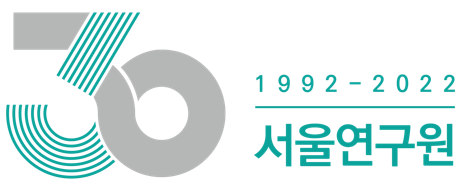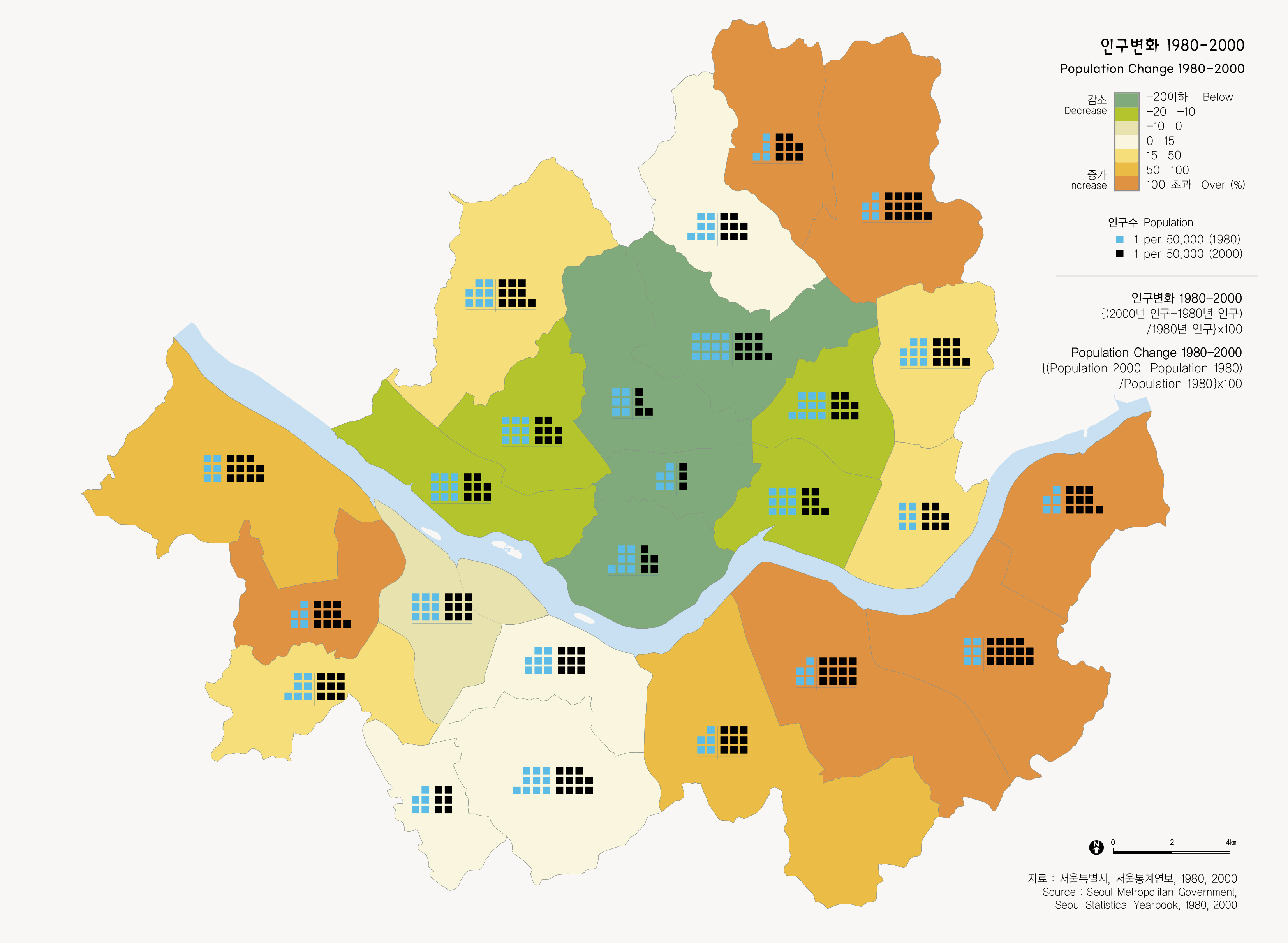-
인구
인구변화
-
인구변화
지역별 인구변화는 출생자와 사망자, 그리고 전입자와 전출자의 함수로 이루어진다. 1936년 행정구역 확장에 따른 인구증가, 1950년 6∙25동란으로 인한 급격한 인구 감소 이후 서울시 전체 인구는 1990년을 정점으로 정체되거나 감소추세에 있다. 그러나 서울의 지역개발정책에 따라 일부지역에서는 인구가 급격히 증가하는 현상을 보인다.
1980년대 이후에는 도심지역은 상업기능 강화에 따라 지속적인 인구감소를 경험하고 있으며, 80년대 강남개발, 90년대 초반 서울 외곽지역 개발에 따라 일부지역에서 급격한 인구증가를 보이고 있으며, 90년대 후반부터는 재개발 등으로 인해 일부지역에서 인구증가 현상이 나타나고 있다.
Population Change
Regional population changes reflect the number of births, the deceased, move-ins and moveouts of residents. After the sudden population increase following the 1936 administrative district change and an abrupt decrease due to the Korean War in 1950(June 25), Seouls population remains more or less stagnant within the 1990s, and as a turning point and experiencing decreases. According to Seouls regional development plan, some areas however showed an abrupt population increase.
Since the 1980s, the downtown area of Seoul has experienced a continuing population decrease due to strengthened commercial functions of the area. Due to the development of the Gangnam region in the 1980s and the development of its suburban areas in the early 1990s, some regions showed a sudden population increase. Since the late 1990s, some regions show population increases due to redevelopment.
출처 : 서울특별시, 서울통계연보, 1980, 2000
출처 : 서울특별시, 서울통계연보 1980, 1985, 1990
출처 : 서울특별시, 서울통계연보 1990, 1995, 2000





 1915-2000.jpg)
